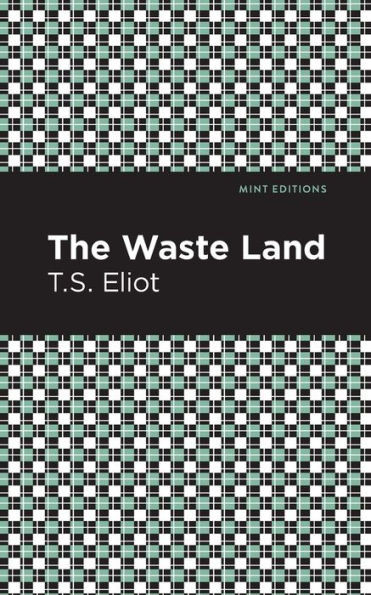

Paperback
-
PICK UP IN STORECheck Availability at Nearby Stores
Available within 2 business hours
Related collections and offers
Overview
Divided into five sections—“The Burial of the Dead;” “A Game of Chess;” “The Fire Sermon;” “Death by Water;” and “What the Thunder Said”—The Waste Land is a complex poem that translates Eliot’s fragile emotional state and increasing dissatisfaction with married life into an apocalyptic vision of postwar England. The poem begins with a meditation on despair before moving to a polyphonic narration by figures on the theme. The third section focuses on death and denial through the lens of eastern and western religions, using Saint Augustine as a prominent figure. Eliot then moves from a brief lyric poem to an apocalyptic conclusion, declaring: “He who was living is now dead / We who were living are now dying / With a little patience.” Both personal and universal, global in scope and intensely insular, The Waste Land changed the course of literary history, inspiring countless poets and establishing Eliot’s reputation as one of the foremost artists of his generation.
This edition of T.S. Eliot’s The Waste Land is a classic of English literature reimagined for modern readers.
Since our inception in 2020, Mint Editions has kept sustainability and innovation at the forefront of our mission. Each and every Mint Edition title gets a fresh, professionally typeset manuscript and a dazzling new cover, all while maintaining the integrity of the original book.
With thousands of titles in our collection, we aim to spotlight diverse public domain works to help them find modern audiences. Mint Editions celebrates a breadth of literary works, curated from both canonical and overlooked classics from writers around the globe.

Product Details
| ISBN-13: | 9781513279671 |
|---|---|
| Publisher: | Mint Editions |
| Publication date: | 02/16/2021 |
| Series: | Mint Editions (Poetry and Verse) |
| Pages: | 22 |
| Product dimensions: | 5.00(w) x 8.00(h) x (d) |
About the Author
Table of Contents
Introduction 7
Biographical Sketch 14
The Story Behind the Story 19
List of Characters 22
Summary and Analysis 26
Critical Views 53
Eleanor Cook on Maps of The Waste Land 53
Louis Menand on Nineteenth Century Style 57
Sandra M. Gilbert on Eliot's Mourning of a Friend 68
Michael Levenson on Eliot's Views of Postwar London 74
Juan A. Suarez on the Meaning of the Gramophone 85
Shawn R. Tucker on Anxiety in The Waste Land 89
Thomas Dilworth on Sex Between the Typist and the Young Man 94
Camelia Elias and Bent Soerensen on the Influence of Ovid 97
Works by T.S. Eliot 101
Annotated Bibliography 103
Contributors 105
Acknowledgments 108
Index 110
What People are Saying About This
The Waste Land remains the best manifesto of modernism in poetry — a triumph of concision, eloquence, colloquialism, symbolism, cinematic cutting, collage of existing literature as well as popular song, all in the service of a kind of purgatorial philosophy, civilization was decaying, man was growing impotent, salvation lay in the injunctions of a Sanskrit Upanishad: "Give, sympathize, control." (Anthony Burgess, from One Man's Chorus)
